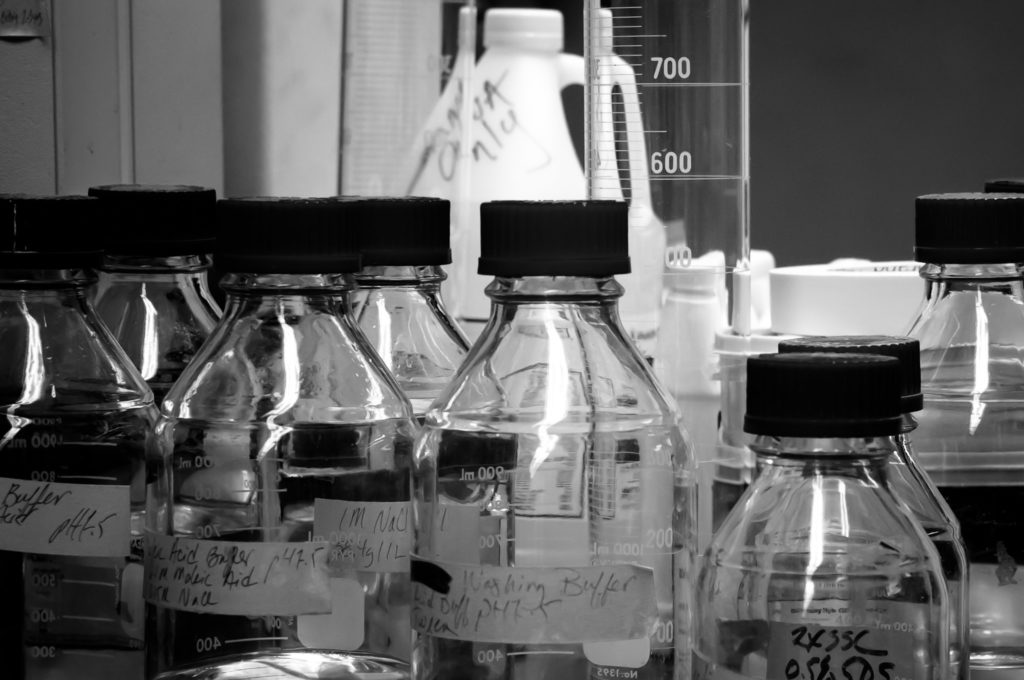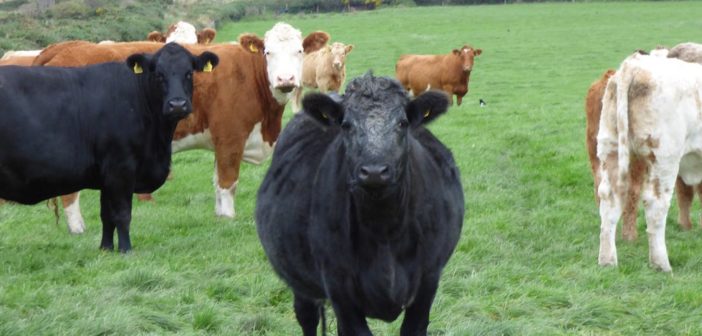Disclaimer: as is the case with all work we publish by outside authors, the views and opinions expressed in this post are those of the author, and do not necessarily reflect the official positions of Animal People, Inc.
A couple months ago, Singapore was announced to be the first country where people will soon be able to purchase lab meat.
The vegan community rushed to celebrate the news, pronouncing this the beginning of the end of both animal exploitation and animal agriculture, obviously without having done any research on how this meat is produced.
Before presenting the relevant information that can be found in the scientific literature online, I would like to state the following simple thing: This meat will never be an ethical alternative, since it’s based on animal exploitation. Because of this, it is not aligned with veganism’s definition or values. This really makes me wonder why this technological evolution is talked about so much by the vegan community as something positive and to be celebrated.
It doesn’t need more than common sense in order for someone to understand that the production of lab-grown meat needs a biopsy to be conducted on some nonhuman animals. Thus, animal exploitation is not going to end, but it will be perpetuated instead. Additionally, people frequently ignore the fact that the biopsy itself is painful, and that it requires animals to be held in captivity. The conversation should not even have to go that far, though. When you are antispeciesist and vegan, you fight for the end of the exploitation of nonhuman animals, not just for their living condition to improve (just as no abolitionist activist ever fought for better living conditions for slaves; their fight was for the abolition of slavery).
Lab-grown meat also perpetuates the idea that nonhuman animals are commodities. It denies their inherent value and depersonalizes them.

All labs that work on the production of lab-grown meat, in order to promote the growth of these cultured cells, are required to use fetal bovine serum (FBS), which is a key component of the standard culture medium used in biotech labs all over the world. This requires (the following sentence is graphic) slaughtering a pregnant cow and draining blood from the heart of her live, unanesthetized fetus (Roheim et al., 2016).
When it comes to lab-grown chicken meat, FBS cannot be completely replaced by chicken serum, since the fetal environment from which the FBS is derived is richer in growth factors (Horiuchi et al., 2006).
If there is one community that can applaud this technological evolution, it’s environmentalists, since lab-grown meat’s production requires 99% less land use and 82-96 % lower water than animal agriculture today, and it would produce 78-96% fewer greenhouse gas emissions (Τuomisto & Teixeira de Mattos, 2011).
However there is more recent research that shows that in the long term, the lab-grown meat industry may have bigger environmental impact than animal agriculture’s (Mattick et al., 2015). These new figures take into account some additional variables, like the energy cost of the industry.
Additionally, the growth of cells in a lab requires a sterilized environment. Sterilization is achieved through constant use of single-use plastics. Some equipment can be made of stainless steel, which can be sterilized with steam, but that requires energy. And the list goes on…
All this reminds me of Impossible Burger’s promotion by vegan activists. For the production of this plant-based burger, 188 rats had to suffer due to animal testing. Many vegans said that these 188 rats were sacrificed in order to rescue billion of cows in the future. There is zero logic here.
This is a great example of how green capitalism is destroying veganism. Maybe it’s finally time to dissociate antispeciesism and veganism.
Βibliography
Horiuchi, H., S. Furusawa, & H. Matsuda. (2006). Maintenance of Chicken Embryonic Stem Cells in Vitro. Embryonic Stem Cell Protocols: Volume 1: Isolation and Characterization 1: 17–34.
Mattick, Carolyn S., Landis, Amy E., Allenby, Braden R., Genovese, Nicholas J. (2015). Anticipatory Life Cycle Analysis of In Vitro Biomass Cultivation for Cultured Meat Production in the United States. Environmental Science & Technology.
Rorheim, A., Mannino, A., Baumann, T., & Caviola, L. (2016). Cultured meat: An ethical alternative to industrial animal farming. Sentience Politics, 1-14.
Tuomisto, Hanna L. & Teixeira de Mattos, M. Joost (2011). Environmental Impacts of Cultured Meat Production. Environmental Science & Technology, 45(14), 6117–6123.
This article was originally published on the Ethos & Empathy website.
Featured image: a herd of cows. Image credit Wolf Gordon Clifton / Animal People, Inc., CC BY-SA 2.0.





